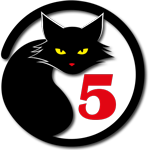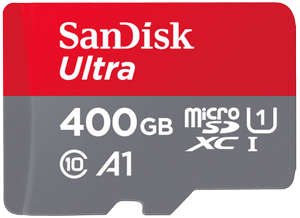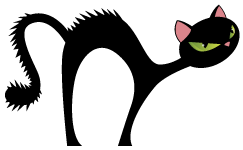Adobe has so many applications that run on mobile devices that it's hard to keep track of them all. Some are aimed at professional photographers, designers, and videographers and others are intended more for amateurs. That doesn't mean amateurs can't use the pro apps or vice versa. It just means that you may need some guidelines to tell the applications apart.
The number reduced slightly when Adobe combined Color, Shape, Brush, and Hue into a single new application called Capture. Work done in Capture can be used by Adobe's video, design, and photographic applications.
Several new applications have been added, though. These include 3 applications with Spark in the name -- Page, Post, and Video. Although intended primarily for non-professionals, each has capabilities that might be exactly what a pro needs.
This is similar, I think, to how cameras are being used today. A professional photographer may be carrying thousands of dollars worth of gear and yet choose to use the camera in a smart phone when it's appropriate. The Spark applications are used to create quick website pages, graphics for social media, and short videos.
Designers have 5 apps to reach for: Illustrator Draw, Photoshop Sketch, Comp CC, Experience Design, and Preview.
Photographers can use Lightroom Mobile not only to edit photographs, but also to capture raw images from those mobile devices that support raw images. You'll find Mix and Fix -- Mix to combine multiple images and Fix to allow retouching on a mobile device. There's also Photoshop Express and Photo Editor by Aviary. That last one is promoted by Adobe and free to download, but it's the free version and there are some paid components.
Behance and Portfolio also have mobile versions that make it possible for people to show off their own work and find other artists.
These applications were game changes when they were introduced a few years ago and as they mature and gain additional features, they open the door for photographers, designers, and videographers. Literally open the door. Tasks that once would have been possible only on a desktop computer can now be accomplished in the field. And the "field" could be an actual field, a wedding reception, a spot at the beach, or a chair in the back yard.
The mobile applications aren't replacements for the desktop applications and you can't do everything on a mobile device, but they provide a way to get a jump start on work that you'll need to do in the studio.
For example, let's say I have a client in the Tischman Building in New York City, which I don't. The client is located on the 75th floor, which is quite remarkable for a 41-storey building. They want me to design a small card that will be included with every pumpkin for a cat that they ship.
Pumpkins are every bit as important to cats as are bicycles to fish.
While in the office, I might grab an image of a cat with a pumpkin for use on the left side of the card, set the company name in orange using a display typeface, contact information in a standard serif face, and a bold tag line. In reality, the typefaces for the company name and the tag line won't be used in the final work, but it's enough to show the client what I'm thinking.
Once the client has approved the concept, I can send it to InDesign, Photoshop, or Illustrator so that it will be ready for me to finalize when I get back to the office.
That's an example using Adobe Comp.
The Spark Applications are intended primarily for use by non-designers. Here's an example of Spark Post.
One of our cats likes to sleep under a blanket, but she doesn't like to be picked up. I picked her up (bad) and stuffed her under a blanket (good). That seemed like an amusing message for a Facebook post.
So I opened Spark Post, selected "Facebook" as the target size, grabbed a cat image (not Chloe, by the way) and added some text. Look what the application did automatically: It selected a text color that matches a color in the image, it selected a background color for the text that's the same as the background of the image, and it formatted the text in an interesting way.
The whole process took less than 5 minutes and then it took me to Facebook, allowed me to type a message, and completed the post.
It's not uncommon even for a professional photographer to use the camera in a smart phone to take a picture. Depending on the desired use, the image quality is adequate despite the tiny sensors used in smart phones. But smart phones rarely offer the option of storing a raw image file. Current smart phone models such as the Google Pixel can, with the right application, save a raw image.
The right application is Adobe Lightroom Mobile. It has a built-in camera application that can save dng files. The dng format was created by Adobe to address several problems with standard raw files. Every camera manufacturer has its own specifications for raw file and these differ even between camera models from the same manufacturer. Additionally, when raw files are edited by applications such as Lightroom, a separate sidecar file is created to describe the changes. The dng format can store images from any camera manufacturer and changes are incorporated into the file. Adobe has patented the format, but makes it freely available.
Even if you have a smart phone or a tablet that supports raw images, you won't see that option in the camera application that's included. Instead, you'll need to open Lightroom mobile and choose the camera function. Then you'll be able to choose either jpeg or dng. In many cases, jpeg is sufficient. The files are much smaller for one thing and smart phones have limited amounts of memory. (More about that later.)
Two more problems exist with the dng format: The smart phone will quickly become quite warm. One might even say HOT. In fact, HOT would be exactly the right word to use. And the battery will drain about as fast as a bathtub that's been attacked by a rampaging unicorn (even though they're mythical).
So the general rule for smart phones is to use the jpeg format unless you know that you'll need extensive exposure or color correction. Still, it's nice to know that you have the option when you need it.
If you're a Creative Cloud user, any photograph you create with Lightroom Mobile will be synchronized with Lightroom on your computer, but you can start working on it immediately.
To explore the capabilities of the mobile apps, I selected an old picture (from 2002) of my older daughter.
The EXIF data shows that the image is 15 years old, that it's a jpeg, and that it's relatively low resolution (2240x1680), so the picture already has three strikes against it. Additionally, there is a bit of a magenta cast.
Click any of the smaller images for a full-size view.
To dismiss the larger image, press ESC or tap outside the image.
So I pushed the overall color temperature toward the warmer side of the scale (this controls yellow-blue balance), and pulled the tint slider toward slightly toward the green side of the scale. Tint controls green-magenta balance. Even though this is an old jpeg image, the improvement is significant.
Notice the folds in the neckline, though. These aren't really objectionable -- after all, when people bend, the skin must fold -- but if I wanted to reduce or remove the effect, Photoshop Fix would be the tool to use.
When the image opens in Fix, (1) choose the operation you want (Spot Heal, Patch, Clone, or Fix Red Eye), (2) select the brush size and hardness, make the changes you want, and (3) return the image to Lightroom Mobile.
Back in Lightroom Mobile, the original image has been joined by two new images. Changes made are non-destructive -- meaning that you can always get back to the original photo -- and there are two images from Fix because I ran through the process twice.
Returning to the desktop computer, the two new images have been automatically synced with the original. Now I could use any of Lightroom's editing functions and even push the image over the Photoshop if I wanted to perform any pixel-level editing.
The mobile apps are free, but somewhat limited for users who don't have a paid Creative Cloud subscription. The capture, organization, and sharing features in Lightroom Mobile are available, as are many of the editing features. However, a paid subscription adds the ability to edit raw files and use the Local Adjustment tool, synchronization of photos on all devices including your computer, and the ability for mobile applications such as Mix, Fix, and the Spark applications to work with synchronized files.
Lightroom is available as part of several Creative Cloud plans and as an application with a perpetual license. Only the Creative Cloud version of Lightroom can be used with the mobile apps.
 You'll need a subscription for best results, but it's worth it.
You'll need a subscription for best results, but it's worth it.Although the free mobile applications are useful without a Creative Cloud subscription, their real power becomes evident when you add a subscription. The cost ranges from $50 per month for all of the applications to $20 for a single application, but there's an irresistible option for photographers: $10 per month for Lightroom, Photoshop, and all of the mobile applications. Those who don't need the video, audio, website, and publishing applications will find everything they need in Creative Cloud Photography.
Additional details about all the plans are available on the Adobe website.
About jpg and jpeg: Originally, DOS computers allowed only an 8-character file name with a 3-character extension, so the extension for files created using a process developed by the Joint Photographic Experts Group was shortened to jpg. That extension remains, but all modern computers now allow longer extensions, so I generally write the extension as jpeg.
It's now possible to capture raw images, not just jpeg files, on some phones. If the hardware is capable and you're using Adobe Lightroom's mobile application, raw is an option. But raw images take up much more space than compressed jpegs. Instead of a file that's 2 or 3 megabytes, you'll have one that's 10 or 20 megabytes, or more. How much storage is available on your phone?
For phones that can accept microSD cards, storage is about to get larger. A lot larger.
That's good because, in addition to high-res raw photo files, some of these phones also are capable of shooting 4K video
 No, this is not a hoax photo. It's an image that's considerably larger than real life. This is a microSD card. Nothing special there, but this card holds 400GB of data! Pop this into your smart phone or tablet if you need to carry around enormous amounts of data.
No, this is not a hoax photo. It's an image that's considerably larger than real life. This is a microSD card. Nothing special there, but this card holds 400GB of data! Pop this into your smart phone or tablet if you need to carry around enormous amounts of data.
Far larger than life size >>>>>>>>>>>>>>>>>>>>>>>>>>>>>>>>>>>>>>>>
These cards are 1mm thick, 15mm wide, and 11mm tall. That's about 0.6" by 0.4".
How much? Are you thinking $1000? Go lower. $500 maybe? Go lower. How about $250? Yes, that's a lot to pay for a memory card, but that's a gigantic amount of memory in a form factor designed for phones and tablets.
If you have an Apple phone or tablet, sorry. This is not for you. Apple doesn't provide SD slots for extra memory. Those who want to add memory to an Apple device will need to buy the memory and they pay a technician to disassemble the device and install it. It's also not an option for those who have a Google Pixel phone.
These cards can hold up to 40 hours of Full HD video and feature transfer speeds of up to 100MB per second. But they're not only for phones. Computers such as Microsoft's Surface Pro tablets also have microSD slots. Those who use these tiny computers often load them with Adobe's photo and video applications, so the ability to store a lot of data will be welcome.
Remember this picture from last week? >>>>>>>>>>>>>>>>>>>>>>>>>>>>
I added the SanDisk 400GB microSD card for comparison. The large black drive is 64MB, so the tiny microSD card can hold
the equivalent of 6250 of the original thumb drive. And because that thumb drive held the equivalent of 45 3.5-inch floppy disks, the microSD card would be the equivalent of 281,250 floppies. And just in case you're wondering, each floppy disk case is 3.3mm thick so you could put them in a stack 928,000mm tall. That's 928 meters, about 3045 feet. That's nearly 0.6 of a mile. That's assuming I did the math right. (And I used Photoshop to add the microSD card to the picture.)
Should your memory needs not be quite that huge, there are microSD cards ranging in size from 32GB ($15) to 256GB ($130). Or buy a 16GB card with a little pocket change ($10).
It won't go down as the largest breach in history, but it could be the worst we've seen so far because of what thieves walked off with.
 What could a thief do with your credit card number, birth date, home address, and Social Security number? Obviously, a lot. And that's what crooks exfiltrated from Equifax for 209,000 consumers. They also grabbed personal details from 182,000 disputed transactions.
What could a thief do with your credit card number, birth date, home address, and Social Security number? Obviously, a lot. And that's what crooks exfiltrated from Equifax for 209,000 consumers. They also grabbed personal details from 182,000 disputed transactions.
Overall, Equifax says that information from 143 million (yes, 143,000,000) consumers was exposed.
The company has hired a cyber-security firm to figure out what went wrong. Equifax has information about more than 800 million consumers and nearly 100 million businesses on its servers.
Equifax chairman Richard Smith, characterized the event as "disappointing" and said that the company has established a special website with further information.
The security landscape is frustrating at best. Toward the end of the last century, Norton Antivirus was the application that seemed to provide the best protection. In 1990, Norton sold the company to Symantec and since then it's been a challenge to find a system that works without needlessly hampering users.
Under Symantec's leadership, Norton Antivirus became large, bloated, and slow. Users abandoned it for other applications, but most of these eventually also became large, bloated, and slow. Microsoft Security Essentials seemed to be a good choice, but then development stalled and I went back to third-party solutions. A few months ago, I tried a Spanish protective application called Panda. It seemed to tread lightly on resources.
But I found that Panda Antivirus automatically uninstalled an application that I use and noticed that it blocked access to other applications that I had determined to be useful and safe. Dealing with Panda's support group turned out to be an exercise in frustration and futility so, with more than 200 days remaining on a year's subscription, I abandoned Panda.
Less than half an hour after I filled out the termination notice on Panda's website, the company sent an email telling me that I was in danger of losing my protection. In fact, I already knew that.
Now my computers are protected by Microsoft Security Essentials, Malwarebytes, and RansomFree. This seems to be a viable combination. MSE handles the firewall and basic protective functions. Malwarebytes watches for unwelcome applications. And RansomFree is designed to detect and thwart attempts to maliciously encrypt files.
There is no perfect solution, that's for sure. But these 3 applications seem to work together without getting in each other's way. That was a design consideration by Malwarebytes from the beginning and RansomFree seems to take a similar approach.
Your experience may differ, but so far I have tried and eliminated Norton/Symantec, Webroot, AVG, Avira, McAfee, Bitdefender, Kaspersky, Avast, and Eset. There are others that I haven't tried, but I've always felt that protective measures created by the developer of the operating system would be the best choice. Microsoft Security Essentials might not have all the bells and whistles included with the third-party applications, but it gets out of its own way, plays well with others, and offers a good baseline of protection.